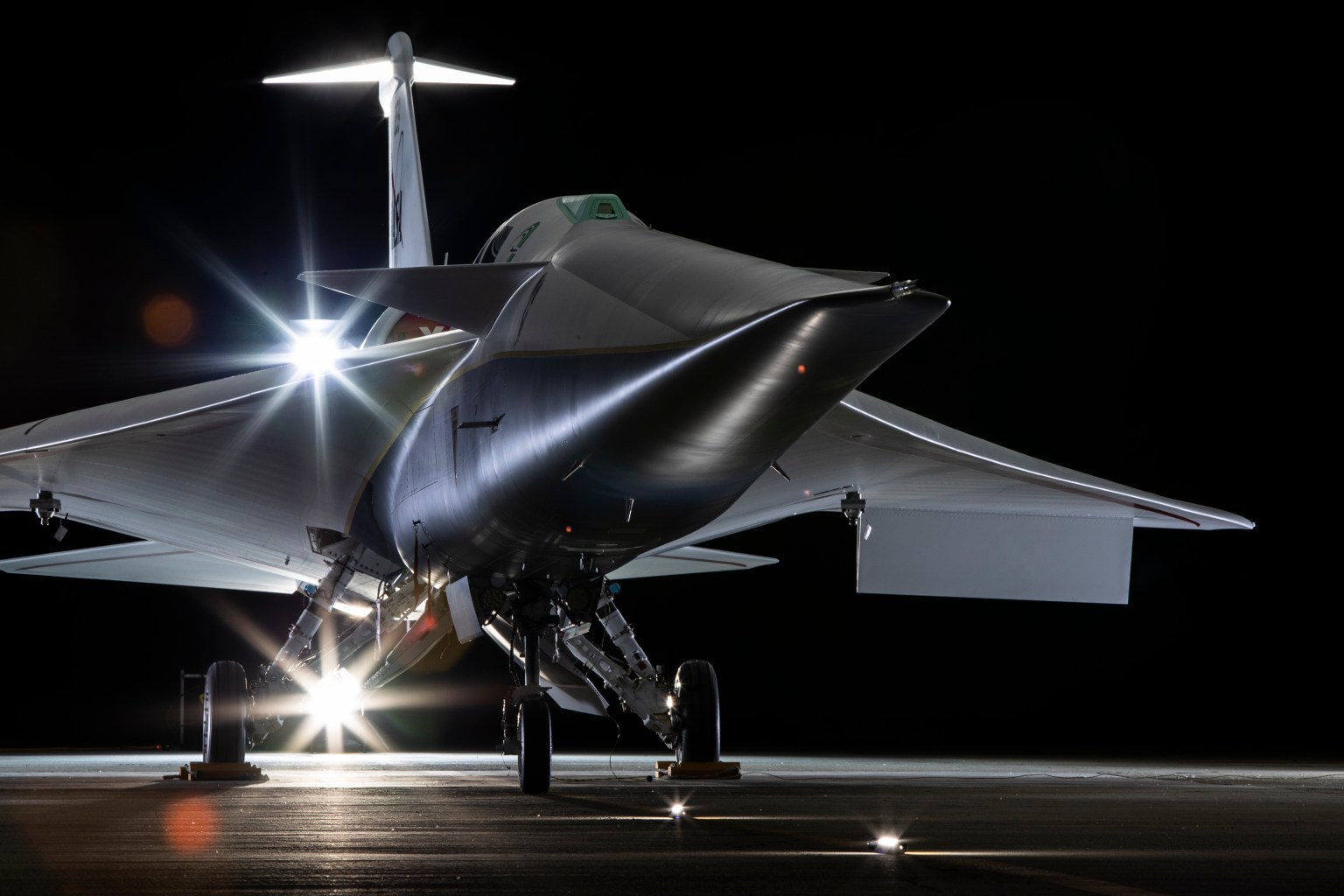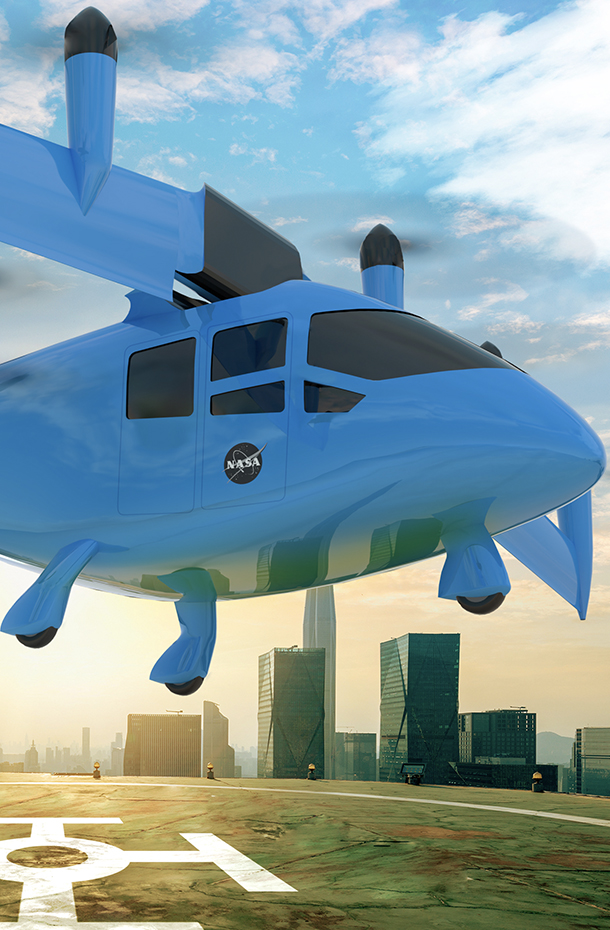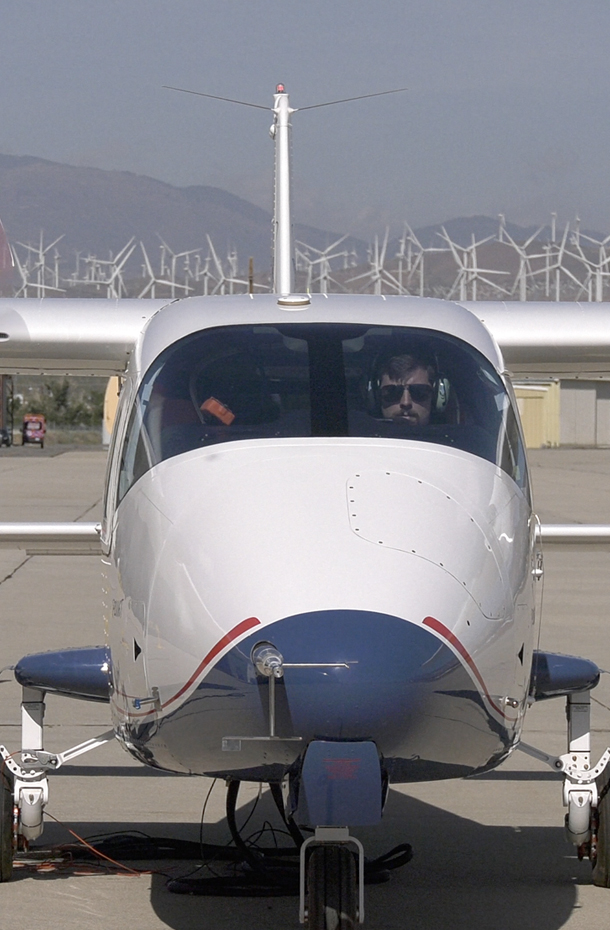LEGEND: ARMD NASA CENTERS
ARC = Ames Research Center
AFRC = Armstrong Flight Research Center
GRC = Glenn Research Center
HQ = Headquarters
LaRC = Langley Research Center
Technology and Innovation
Winner
Ms. Michelle Eshow, ARC
Ms. Eshow, senior researcher of the information technologies group in the Aviation Systems Division at ARC, is receiving recognition for her vision and direction in the creation and implementation of Sherlock. Ms. Eshow’s creation has benefitted the Shadow Mode Assessment Using Realistic Technologies for the National Airspace System (SMART-NAS) Test Bed and the Airspace Technology Demonstration-2 (ATD-2) projects by providing an efficient way to track, integrate and archive immense amounts of complex data. She not only created Sherlock, but also led the team that established data feed protocols, and spearheaded the process to gain FAA approval of Sherlock for NASA’s use. Thanks to Ms. Eshow’s guidance, Sherlock’s data management capabilities can continue to make an impact on NASA’s Air Traffic Management programs.
Winner (Group)
Integrated Test and Evaluation Team, AFRC
Considering an increased desire for legitimate Unmanned Aerial Systems (UAS) and UAS Traffic Management (UTM) on a national scale, the Integrated Test and Evaluation (IT&E) Team at AFRC collaborated with strong industry partners. Despite various challenges, IT&E met all of its submission deadlines and demonstrated safe and efficient operation of UAS. The results from this research have directly provided important information to the SC-228 Minimum Operational Performance Standards to reduce technical barriers in UAS-NAS introduction.
TEAM LEAD: Heather A. Maliska (AFRC)
View Group Winners
Honorable Mention (Group)
Commercial Supersonics Technology (CST) Low Noise Propulsion Technical Challenge Team, GRC
CST is being honored for its work on successfully researching one of ARMD’s major challenges to improve the national airspace, improving airport noise. This research is a direct link to NASA’s goal to facilitate commercial supersonic flight, which CST capitalized on using propulsion systems. After examining how to amplify performance while using lower jet exhaust noise in a multi-year campaign, CST demonstrated the concept through a ground test, predicting and validating the aerodynamic and acoustic result. Additionally, the project was completed on schedule, allowing the findings to be formally presented in time to prepare for FY17.
TEAM LEAD: James Bridges (GRC)
View Team Members
Leadership and Management Excellence
Winner
Mr. Isaac Lopez, GRC
Strong team and resource management allowed Project Manager for Convergent Aeronautics Solutions Mr. Lopez to stand out and receive recognition for this award. Demonstrating a flexible, involved approach, his involvement expanded beyond the research and into the more intricate details that make projects happen. He advocated for resources, defined new roles and streamlined complex processes. His most notable achievement was hiring a management position through his own system, CASTInG, which featured proposals and involvement from expert panels to bring an actively engaged new hire to the team. Additionally, Mr. Lopez strategically reformulated the budget for the 2018 Planning, Programming, Budgeting and Execution roadmap to better align with goals and expectations. A driven but personable individual, Mr. Lopez paved the way for success at GRC.
Program and Mission Support
Winner (Individual)
Ms. Sharon Lozano, ARC
Through her initiative and forward thinking, Ms. Lozano demonstrated award-winning excellence in her role as Public Affairs specialist at ARC supporting the Unmanned Aerial Systems (UAS) Unmanned Traffic Management (UTM) program. Considering the amount of national and international interest in NASA’s UTM progress, Ms. Lozano welcomed the media involvement, planned and coordinated the first-ever UTM Convention and other inaugural UTM events for the media. In response, Ms. Lozano coached researchers and directors how to respond to the media’s questions while factoring in stakeholders. She has since moved to a different part of ARMD, but continues to assist in UTM media management. Her role directly affected ARMD’s reputation as a global leader in low-altitude UAS operation.
Winner (Group)
LMI Support Team, Headquarters
The LMI team is being honored for its role as “the face of NASA” at Headquarters. The team serves as a point of contact, relay for ARMD’s goals and initiatives and logistical management, and has allowed projects and important meetings to run smoothly – despite having such a small staff. Most notably, the LMI team’s success in coordinating various Key Decision Point Reviews let NASA and outside organizations focus on their overall goals. As a result, reviewers have consistently praised the LMI team for its critical role in ARMD.
View Group Winners
Strategic Partnerships
Winner
Mr. David Wing, LaRC
Mr. Wing is receiving recognition for his role in solidifying key partnerships throughout NASA ARMD’s Traffic Aware Strategic Aircrew Requests (TASAR) and creating adaptable roadmaps. His tenacity and dedication to forming alliances paved the way for TASAR’s evolution from a flight support tool to a more innovative autonomous operator. Mr. Wing has become a visible advocate for TASAR at conferences, industry meetings and among the FAA. His passion and skill for collaborating with major airspace partners has boosted ARMD’s advancement in research capabilities.
High Potentials
Winner
Dr. Valerie Wiesner, GRC
Thanks to her insight on the effects of environmental factors on high-temperature engine materials, Dr. Wiesner is being awarded for her leadership abilities and her research, which became important for NASA ARMD’s Transformative Tools and Technologies project. Dr. Wiesner’s ground-breaking study established a baseline for validating environmental barrier coatings (EBCs), which work to protect an aircraft’s turbine engine in extreme heat. Her research discovered that the protection from these EBCs were overestimated, and, instead, melt into potentially dangerous particles that melted at the temperature that future aircraft intend to use to operate. As a result, Dr. Weisner is respected within the advanced materials industry, and has since spent her three years at NASA expanding on similar research and making efforts to build an Early Career Network for other ambitious employees.
ARMD Associate Administrator Award

































